
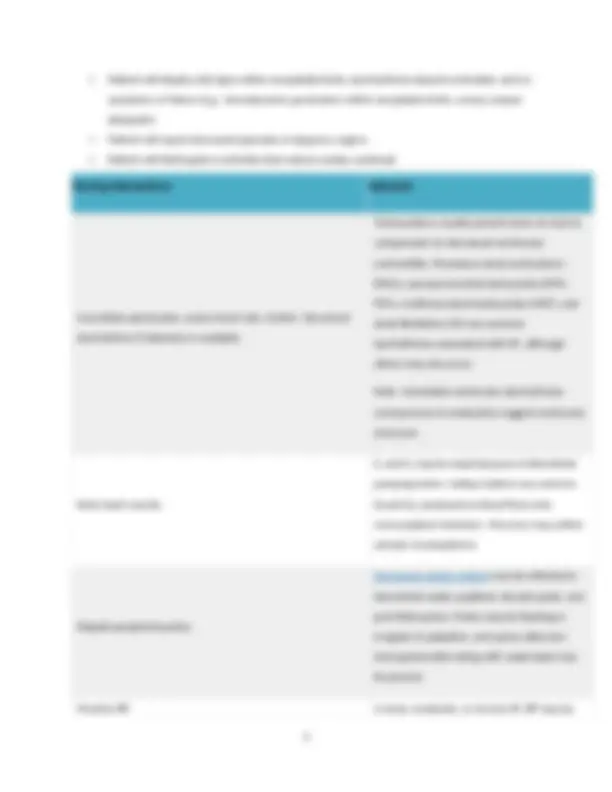
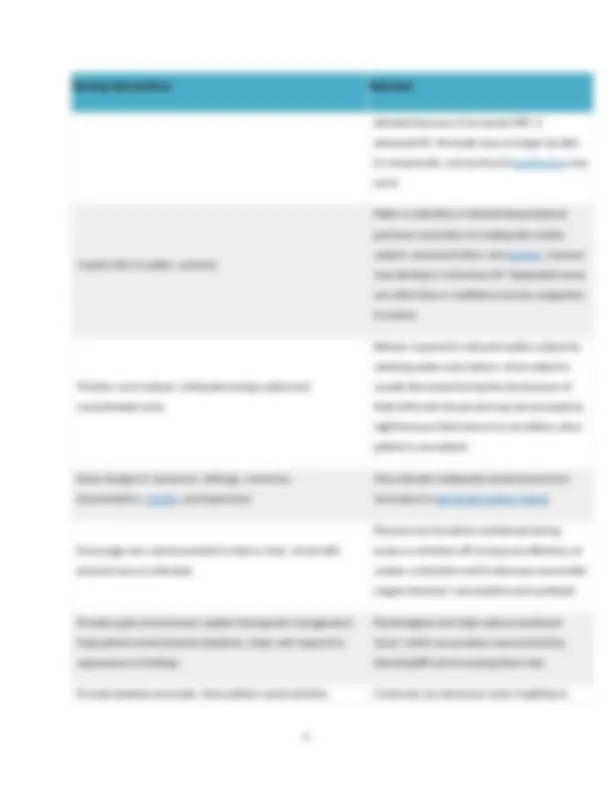
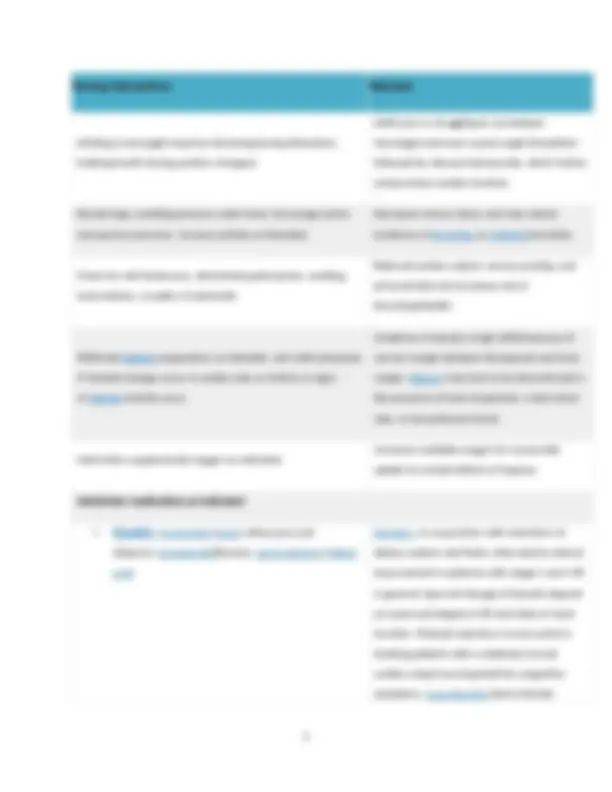
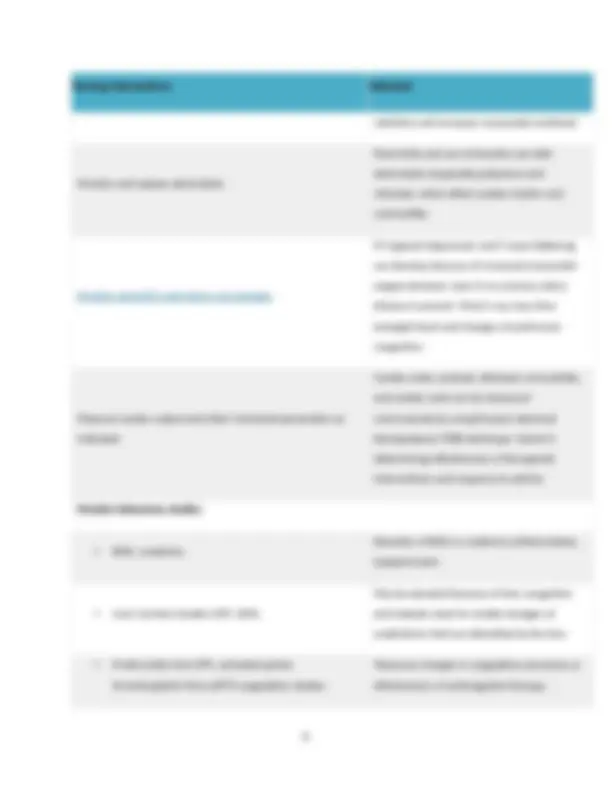
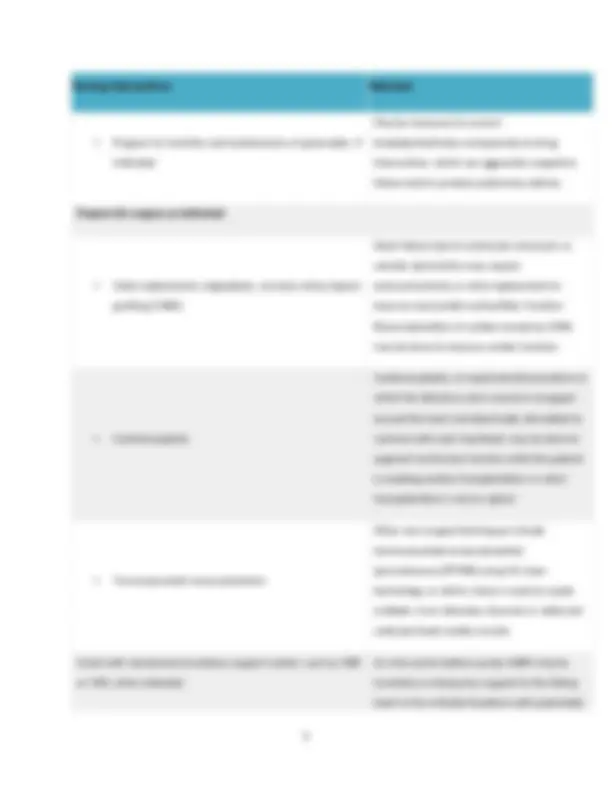
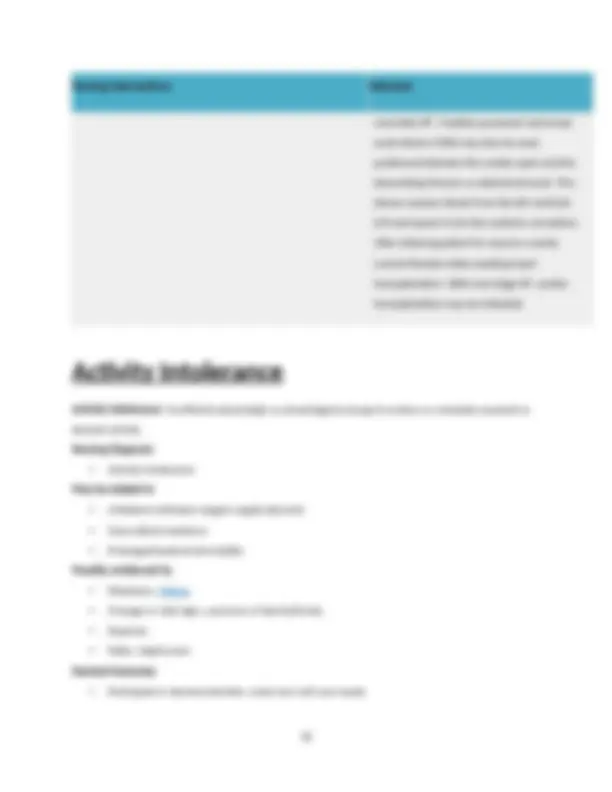
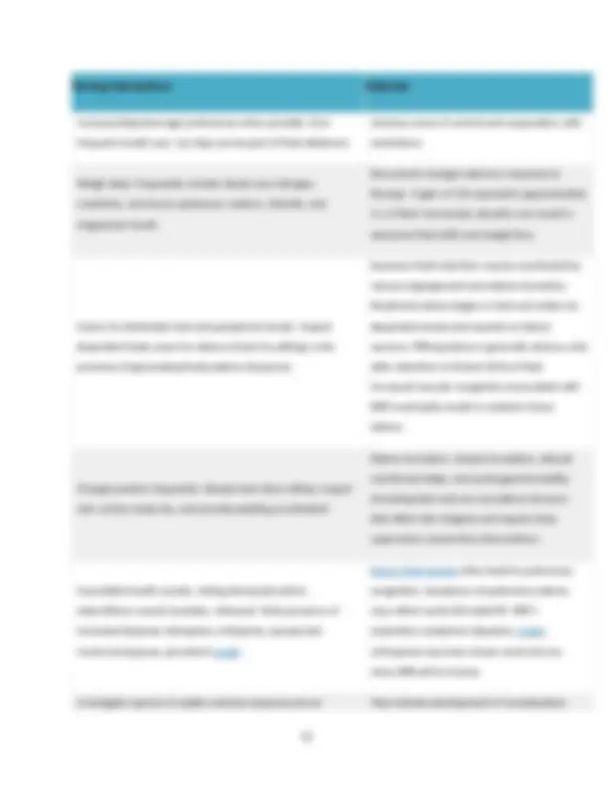

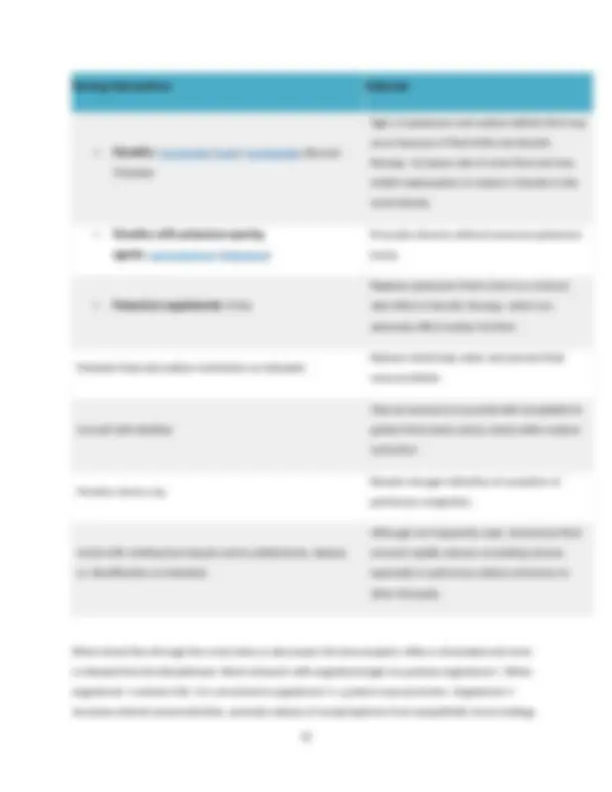
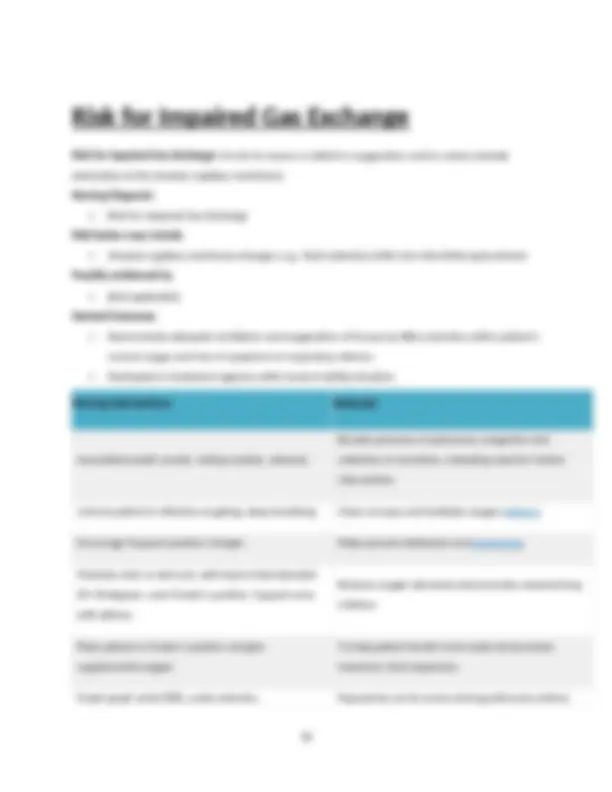
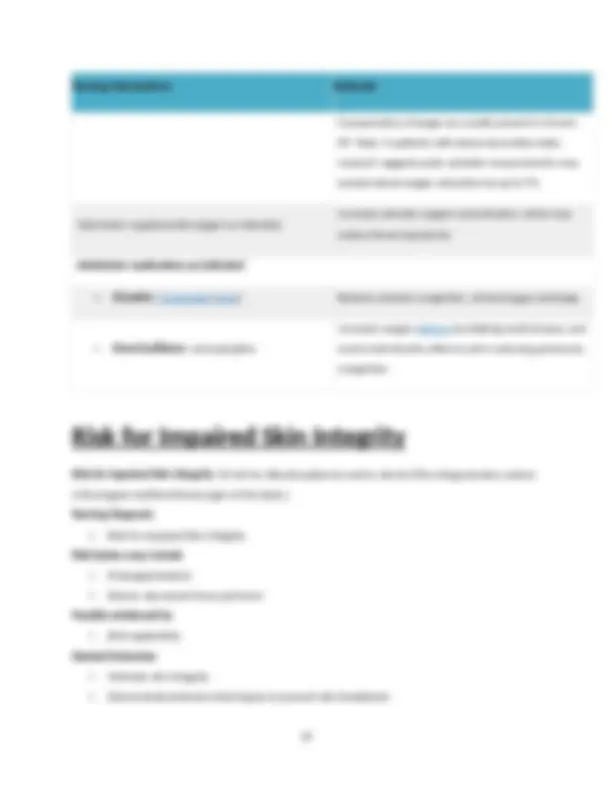
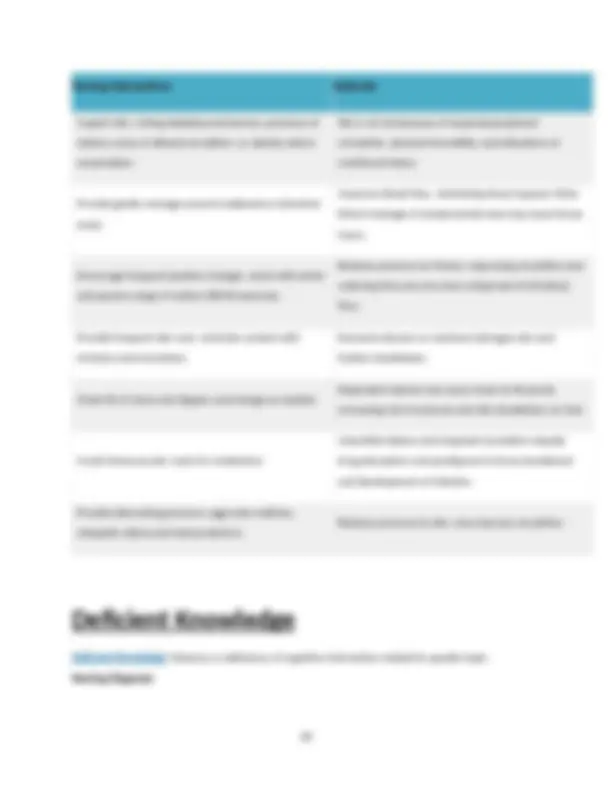
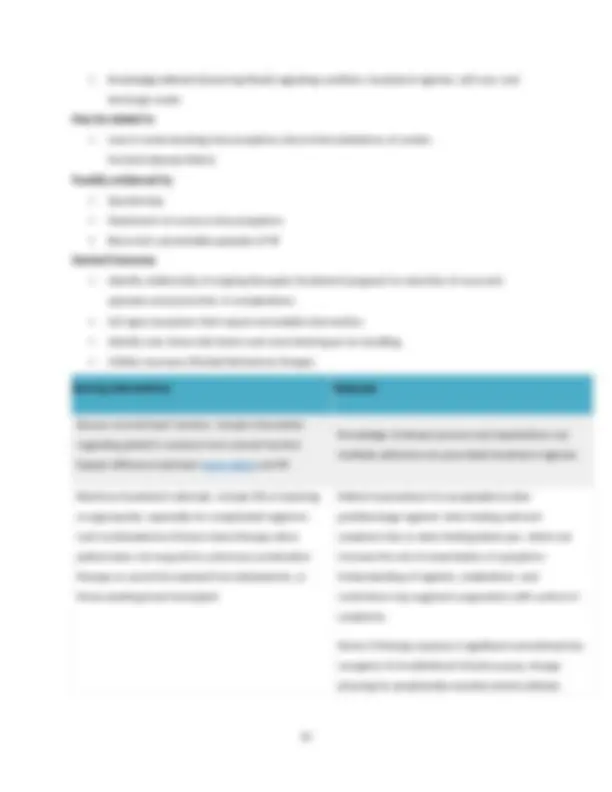
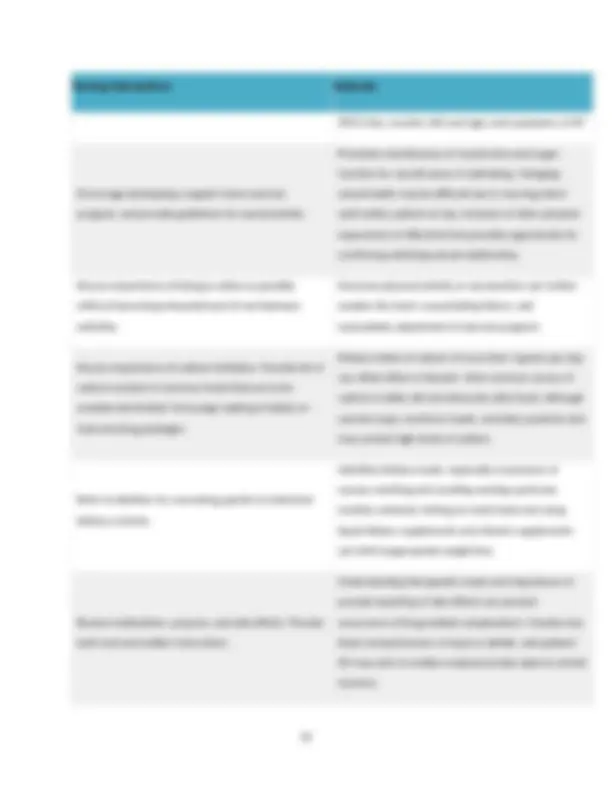
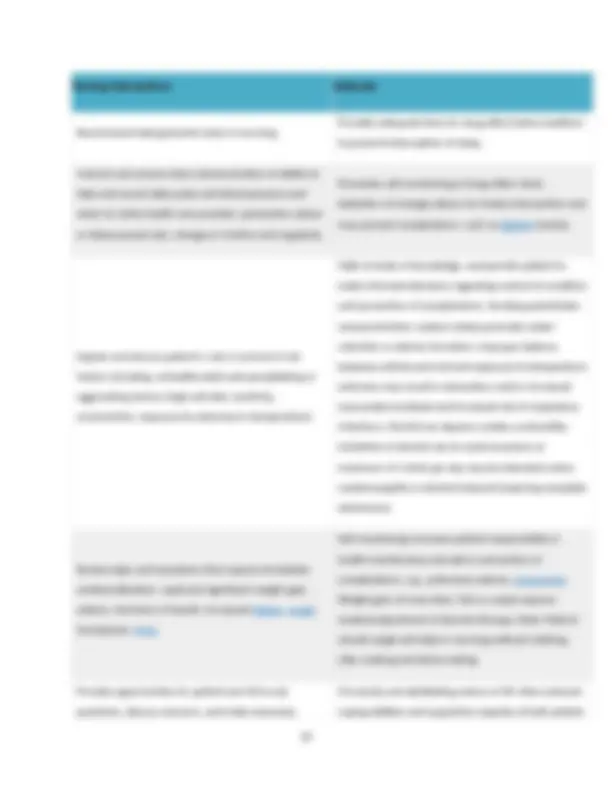
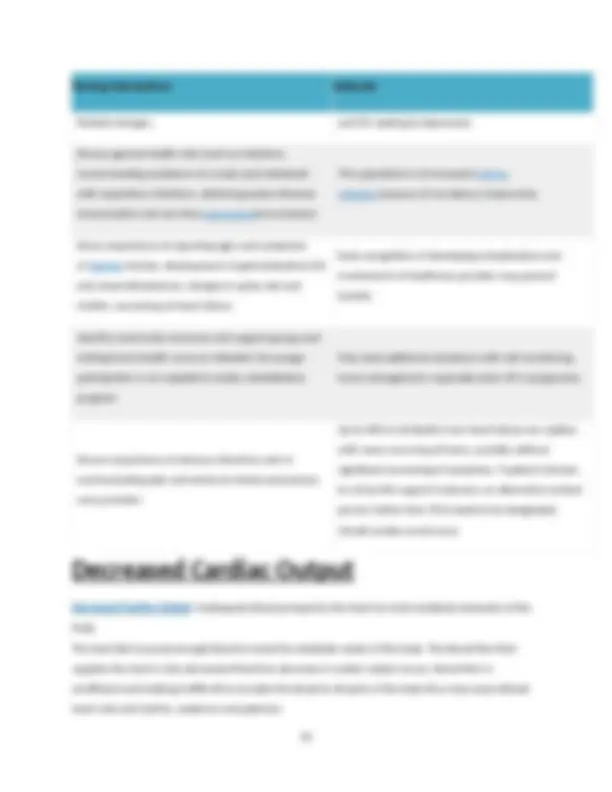
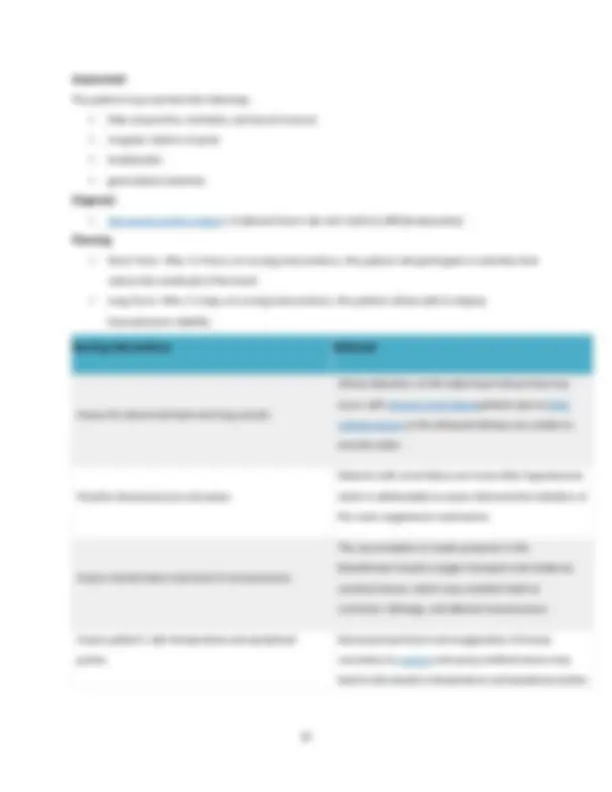
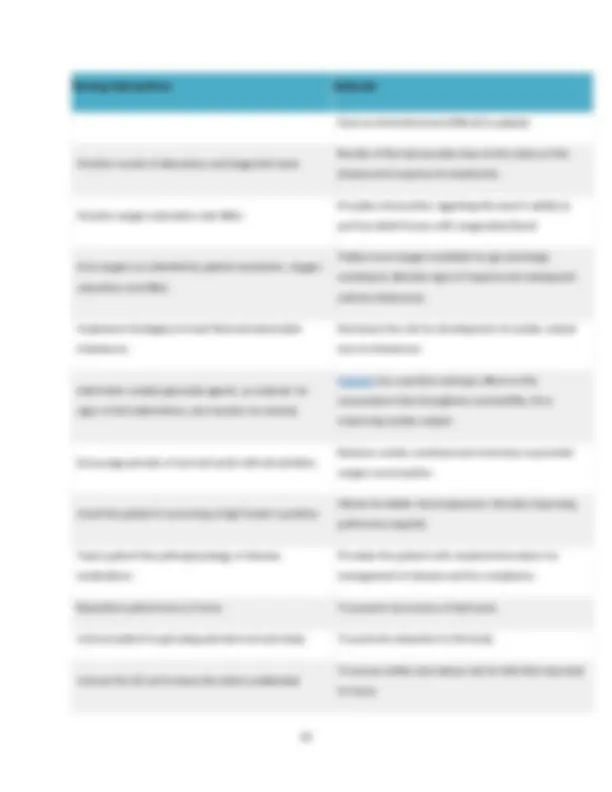



Study with the several resources on Docsity

Earn points by helping other students or get them with a premium plan


Prepare for your exams
Study with the several resources on Docsity

Earn points to download
Earn points by helping other students or get them with a premium plan
Community
Ask the community for help and clear up your study doubts
Discover the best universities in your country according to Docsity users
Free resources
Download our free guides on studying techniques, anxiety management strategies, and thesis advice from Docsity tutors
NR224 HEART FAILURE (HF) OR CONGESTIVE HEART FAILURE (CHF) STUDY GUIDE VAS NOTES(New, 2024): CHAMBERLAIN COLLEGE OF NURSING(Verified,Download to score A)
Typology: Study Guides, Projects, Research
1 / 27

This page cannot be seen from the preview
Don't miss anything!




















Heart failure (HF) or Congestive Heart Failure (CHF) is a physiologic state in which he heart cannot pump enough blood to meet the metabolic needs of the body. Heart failure results from changes in systolic or diastolic function of the left ventricle. The heart fails when, because of intrinsic disease or structural it cannot handle a normal bloodvolume or, in absence of disease, cannot tolerate a sudden expansion in blood volume. Heart failure is not a disease itself, instead, the term refers to a clinical syndrome characterized by manifestations of volume overload, inadequate tissue perfusion, and poor exercise tolerance. Whatever the cause, pump failure results in hypoperfusion of tissues, followed by pulmonary and systemic venous congestion. Because heart failure causes vascular congestion, it is often called congestive heart failure, although most cardiac specialist no longer use this term. Other terms used to denote heart failure include chronic heart failure, cardiac decompensation, cardiac insufficiency and ventricular failure. Nursing Care Plans Nursing care for patients with heart failure includes support to improve heart pump function by various nursing interventions, prevention and identification of complications, and providing a teaching plan for lifestyle modifications. Here are 16+ nursing care plans (NCP) for patients with Heart Failure: Content
Decreased Cardiac Output: Inadequate blood pumped by the heart to meet metabolic demands of the body. Nursing Diagnosis Decreased Cardiac Output May be related to Altered myocardial contractility/inotropic changes Alterations in rate, rhythm, electrical conduction Structural changes (e.g., valvular defects, ventricular aneurysm) Possibly evidenced by Increased heart rate (tachycardia), dysrhythmias, ECG changes Changes in BP (hypotension/hypertension) Extra heart sounds (S 3 , S 4 ) Decreased urine output Diminished peripheral pulses Cool, ashen skin; diaphoresis Orthopnea, crackles, JVD, liver engorgement, edema Chest pain Desired Outcomes
Nursing Interventions Rationale elevated because of increased SVR. In advanced HF, the body may no longer be able to compensate, and profound hypotension may occur. Inspect skin for pallor, cyanosis. Pallor is indicative of diminished peripheral perfusion secondary to inadequate cardiac output, vasoconstriction, and anemia. Cyanosis may develop in refractory HF. Dependent areas are often blue or mottled as venous congestion increases. Monitor urine output, noting decreasing output and concentrated urine. Kidneys respond to reduced cardiac output by retaining water and sodium. Urine output is usually decreased during the day because of fluid shifts into tissues but may be increased at night because fluid returns to circulation when patient is recumbent. Note changes in sensorium: lethargy, confusion, disorientation, anxiety, and depression. May indicate inadequate cerebral perfusion secondary to decreased cardiac output. Encourage rest, semirecumbent in bed or chair. Assist with physical care as indicated. Physical rest should be maintained during acute or refractory HF to improve efficiency of cardiac contraction and to decrease myocardial oxygen demand/ consumption and workload. Provide quiet environment: explain therapeutic management, help patient avoid stressful situations, listen and respond to expressions of feelings. Psychological rest helps reduce emotional stress, which can produce vasoconstriction, elevating BP and increasing heart rate. Provide bedside commode. Have patient avoid activities Commode use decreases work of getting to
Nursing Interventions Rationale eliciting a vasovagal response (straining during defecation, holding breath during position changes). bathroom or struggling to use bedpan. Vasovagal maneuver causes vagal stimulation followed by rebound tachycardia, which further compromises cardiac function. Elevate legs, avoiding pressure under knee. Encourage active and passive exercises. Increase activity as tolerated. Decreases venous stasis, and may reduce incidence of thrombus or embolusformation. Check for calf tenderness, diminished pedal pulses, swelling, local redness, or pallor of extremity. Reduced cardiac output, venous pooling, and enforced bed rest increases risk of thrombophlebitis. Withhold digitalis preparation as indicated, and notify physician if marked changes occur in cardiac rate or rhythm or signs of digitalis toxicity occur. Incidence of toxicity is high (20%) because of narrow margin between therapeutic and toxic ranges. Digoxin may have to be discontinued in the presence of toxic drug levels, a slow heart rate, or low potassium level. Administer supplemental oxygen as indicated. Increases available oxygen for myocardial uptake to combat effects of hypoxia. Administer medications as indicated: Diuretics : furosemide (Lasix), ethacrynic acid (Edecrin), bumetanide(Bumex), spironolactone (Aldact one). Diuretics, in conjunction with restriction of dietary sodium and fluids, often lead to clinical improvement in patients with stages I and II HF. In general, type and dosage of diuretic depend on cause and degree of HF and state of renal function. Preload reduction is most useful in treating patients with a relatively normal cardiac output accompanied by congestive symptoms. Loop diuretics block chloride
Nursing Interventions Rationale glycosides, vasodilators, and diuretics in order to increase myocardial contractility and produce vasodilation. Positive inotropic properties have reduced mortality rates 50% and improved quality of life. Beta-adrenergic receptor antagonists: carvedilol (Coreg), bisoprolol (Zebeta), metoprolol (Lopressor); Useful in the treatment of HF by blocking the cardiac effects of chronic adrenergic stimulation. Many patients experience improved activity tolerance and ejection fraction. Morphine sulfate. Decreases vascular resistance and venous return, reducing myocardial workload, especially when pulmonary congestion is present. Allays anxiety and breaks the feedback cycle of anxiety to catecholamine release to anxiety. Antianxiety agents and sedatives. Promote rest, reducing oxygen demand and myocardial workload. Anticoagulants: low-dose heparin, warfarin (Coumadin). May be used prophylactically to prevent thrombus and embolus formation in presence of risk factors such as venous stasis, enforced bed rest, cardiac dysrhythmias, and history of previous thrombotic episodes. Administer IV solutions, restricting total amount as indicated. Avoid saline solutions. Because of existing elevated left ventricular pressure, patient may not tolerate increased fluid volume (preload). Patients with HF also excrete less sodium, which causes fluid
Nursing Interventions Rationale retention and increases myocardial workload. Monitor and replace electrolytes. Fluid shifts and use of diuretics can alter electrolytes (especially potassium and chloride), which affect cardiac rhythm and contractility. Monitor serial ECG and chest x-ray changes. ST segment depression and T wave flattening can develop because of increased myocardial oxygen demand, even if no coronary artery disease is present. Chest x-ray may show enlarged heart and changes of pulmonary congestion. Measure cardiac output and other functional parameters as indicated. Cardiac index, preload, afterload, contractility, and cardiac work can be measured noninvasively by using thoracic electrical bioimpedance (TEB) technique. Useful in determining effectiveness of therapeutic interventions and response to activity. Monitor laboratory studies: BUN, creatinine. Elevation of BUN or creatinine reflects kidney hypoperfusion. Liver function studies (AST, LDH). May be elevated because of liver congestion and indicate need for smaller dosages of medications that are detoxified by the liver. Prothrombin time (PT), activated partial thromboplastin time (aPTT) coagulation studies. Measures changes in coagulation processes or effectiveness of anticoagulant therapy.
Nursing Interventions Rationale reversible HF. A battery-powered ventricular assist device (VAD) may also be used, positioned between the cardiac apex and the descending thoracic or abdominal aorta. This device receives blood from the left ventricle (LV) and ejects it into the systemic circulation, often allowing patient to resume a nearly normal lifestyle while awaiting heart transplantation. With end-stage HF, cardiac transplantation may be indicated.
Activity Intolerance: Insufficient physiologic or physiological energy to endure or complete required or desired activity. Nursing Diagnosis Activity intolerance May be related to Imbalance between oxygen supply/demand Generalized weakness Prolonged bedrest/immobility Possibly evidenced by Weakness, fatigue Changes in vital signs, presence of dysrhythmias Dyspnea Pallor, diaphoresis Desired Outcomes Participate in desired activities; meet own self-care needs.
Achieve measurable increase in activity tolerance, evidenced by reduced fatigue and weakness and by vital signs within acceptable limits during activity. Nursing Interventions Rationale Check vital signs before and immediately after activity, especially if patient is receiving vasodilators, diuretics, or beta-blockers. Orthostatic hypotension can occur with activity because of medication effect (vasodilation), fluid shifts (diuresis), or compromised cardiac pumping function. Document cardiopulmonary response to activity. Note tachycardia, dysrhythmias, dyspnea, diaphoresis, pallor. Compromised myocardium and/or inability to increase stroke volume during activity may cause an immediate increase in heart rate and oxygen demands, thereby aggravating weakness and fatigue. Assess for other causes of fatigue(treatments, pain, medications). Fatigue is a side effect of some medications (beta- blockers, tranquilizers, and sedatives). Pain and stressful regimens also extract energy and produce fatigue. Evaluate accelerating activity intolerance. May denote increasing cardiac decompensation rather than overactivity. Provide assistance with self-care activities as indicated. Intersperse activity periods with rest periods. Meets patient’s personal care needs without undue myocardial stress and excessive oxygen demand. Implement graded cardiac rehabilitation program. Strengthens and improves cardiac function under stress, if cardiac dysfunction is not irreversible. Gradual increase in activity avoids excessive myocardial workload and oxygen consumption. Assist patient with ROM exercises. Check regularly for calf pain and tenderness. To prevent deep vein thrombosis due to vascular congestion.
Nursing Interventions Rationale incorporating beverage preferences when possible. Give frequent mouth care. Ice chips can be part of fluid allotment. enhance sense of control and cooperation with restrictions. Weigh daily. Frequently monitor blood urea nitrogen, creatinine, and serum potassium, sodium, chloride, and magnesium levels. Documents changes edema in response to therapy. A gain of 5 lb represents approximately 2 L of fluid. Conversely, diuretics can result in excessive fluid shifts and weight loss. Assess for distended neck and peripheral vessels. Inspect dependent body areas for edema (check for pitting); note presence of generalized body edema (anasarca). Excessive fluid retention may be manifested by venous engorgement and edema formation. Peripheral edema begins in feet and ankles (or dependent areas) and ascends as failure worsens. Pitting edema is generally obvious only after retention of at least 10 lb of fluid. Increased vascular congestion (associated with RHF) eventually results in systemic tissue edema. Change position frequently. Elevate feet when sitting. Inspect skin surface, keep dry, and provide padding as indicated. Edema formation, slowed circulation, altered nutritional intake, and prolonged immobility (including bed rest) are cumulative stressors that affect skin integrity and require close supervision/ preventive interventions. Auscultate breath sounds, noting decreased and/or adventitious sounds (crackles, wheezes). Note presence of increased dyspnea, tachypnea, orthopnea, paroxysmal nocturnal dyspnea, persistent cough. Excess fluid volume often leads to pulmonary congestion. Symptoms of pulmonary edema may reflect acute left-sided HF. RHF’s respiratory symptoms (dyspnea, cough, orthopnea) may have slower onset but are more difficult to reverse. Investigate reports of sudden extreme dyspnea and air May indicate development of complications
Nursing Interventions Rationale hunger, need to sit straight up, sensation of suffocation, feelings of panic or impending doom. (pulmonary edema and/or embolus) and differs from orthopnea paroxysmal nocturnal dyspnea in that it develops much more rapidly and requires immediate intervention. Monitor BP and central venous pressure (CVP) Hypertension and elevated CVP suggest fluid volume excess and may reflect developing pulmonary congestion, HF. Assess bowel sounds. Note complaints of anorexia, nausea, abdominal distension, constipation. Visceral congestion (occurring in progressive HF) can alter intestinal function. Provide small, frequent, easily digestible meals. Reduced gastric motility can adversely affect digestion and absorption. Small, frequent meals may enhance digestion/ prevent abdominal discomfort. Measure abdominal girth, as indicated. In progressive RHF, fluid may shift into the peritoneal space, causing increasing abdominal girth (ascites). Encourage verbalization of feelings regarding limitations. Expression of feelings may decrease anxiety, which is an energy drain that can contribute to feelings of fatigue. Palpate abdomen. Note reports of right upper quadrant pain and tenderness. Advancing HF leads to venous congestion, resulting in abdominal distension, liver engorgement (hepatomegaly), and pain. This can alter liver function and prolong drug metabolism. Administer medications as indicated:
and stimulates the adrenal medulla to secrete aldosterone, which enhances sodium and water absorption. Stimulation of the renin-angiotensin system causes plasma volume to expand and preload to increase. Assessment The patient may manifest the following: Edema of extremities Difficulty of breathing Crackles Change in mental status Restlessness and anxiety Diagnosis Excessive Fluid volume related to decreased cardiac output and sodium and water retention Planning & Desired Outcomes Patient will verbalize understanding of causative factors and demonstrate behaviors to resolve excess fluid volume. Patient will demonstrate adequate fluid balanced AEB output equal to exceeding intake, clearing breath sounds, and decreasing edema. Nursing Interventions Rationale Establish rapport To gain patient’s trust and cooperation Monitor and record VS To obtain baseline data Assess patient’s general condition To determine what approach to use in treatment Monitor I&O every 4 hours I&O balance reflects fluid status Weigh patient daily and compare to previous weights. Body weight is a sensitive indicator of fluid balance and an increase indicates fluid volume excess. Auscultate breath sounds q 2hr and pm for the presence of crackles and monitor for frothy sputum production When increased pulmonary capillary hydrostatic pressure exceeds oncotic pressure, fluid moves within the alveolar septum and is evidenced by the auscultation of crackles. Frothy, pink-tinged sputum is
Nursing Interventions Rationale an indicator that the client is developing pulmonary edema Assess for presence of peripheral edema. Do not elevate legs if the client is dyspneic. Decreased systemic blood pressure to stimulation of aldosterone, which causes increased renal tubular reabsorption of sodium Low-sodium diet helps prevent increased sodium retention, which decreases water retention. Fluid restriction may be used to decrease fluid intake, hence decreasing fluid volume excess. Follow low-sodium diet and/or fluid restriction The client senses thirst because the body senses dehydration. Oral care can alleviate the sensation without an increase in fluid intake. Encourage or provide oral care q Heart failure causes venous congestion, resulting in increased capillary pressure. When hydrostatic pressure exceeds interstitial pressure, fluids leak out of the capillaries and present as edema in the legs, and sacrum. Elevation of legs increases venous return to the heart. Obtain patient history to ascertain the probable cause of the fluid disturbance. May include increased fluids or sodium intake, or compromised regulatory mechanisms. Monitor for distended neck veins and ascites Indicates fluid overload Evaluate urine output in response to diuretic therapy. Focus is on monitoring the response to the diuretics, rather than the actual amount voided Assess the need for an indwelling urinary catheter. Treatment focuses on diuresis of excess fluid. Institute/instruct patient regarding fluid restrictions as appropriate. This helps reduce extracellular volume.
Nursing Interventions Rationale Compensatory changes are usually present in chronic HF. Note: In patients with abnormal cardiac index, research suggests pulse oximeter measurements may exceed actual oxygen saturation by up to 7%. Administer supplemental oxygen as indicated. Increases alveolar oxygen concentration, which may reduce tissue hypoxemia. Administer medications as indicated: Diuretics : furosemide (Lasix) Reduces alveolar congestion, enhancing gas exchange. Bronchodilators : aminophylline Increases oxygen delivery by dilating small airways, and exerts mild diuretic effect to aid in reducing pulmonary congestion.
Risk for Impaired Skin Integrity: At risk for altered epidermis and/or dermis [The integumentary system is the largest multifunctional organ of the body.] Nursing Diagnosis Risk for impaired Skin Integrity Risk factors may include Prolonged bedrest Edema, decreased tissue perfusion Possibly evidenced by [Not applicable] Desired Outcomes Maintain skin integrity. Demonstrate behaviors/techniques to prevent skin breakdown.
Nursing Interventions Rationale Inspect skin, noting skeletal prominences, presence of edema, areas of altered circulation, or obesity and/or emanciation. Skin is at risk because of impaired peripheral circulation, physical immobility, and alterations in nutritional status. Provide gentle massage around reddened or blanched areas. Improves blood flow, minimizing tissue hypoxia. Note: Direct massage of compromised area may cause tissue injury. Encourage frequent position changes, assist with active and passive range of motion (ROM) exercises. Reduces pressure on tissues, improving circulation and reducing time any one area is deprived of full blood flow. Provide frequent skin care: minimize contact with moisture and excretions. Excessive dryness or moisture damages skin and hastens breakdown. Check fit of shoes and slippers and change as needed. Dependent edema may cause shoes to fit poorly, increasing risk of pressure and skin breakdown on feet. Avoid intramuscular route for medication. Interstitial edema and impaired circulation impede drug absorption and predispose to tissue breakdown and development of infection. Provide alternating pressure, egg-crate mattress, sheepskin elbow and heel protectors. Reduces pressure to skin, may improve circulation.
Deficient Knowledge: Absence or deficiency of cognitive information related to specific topic. Nursing Diagnosis